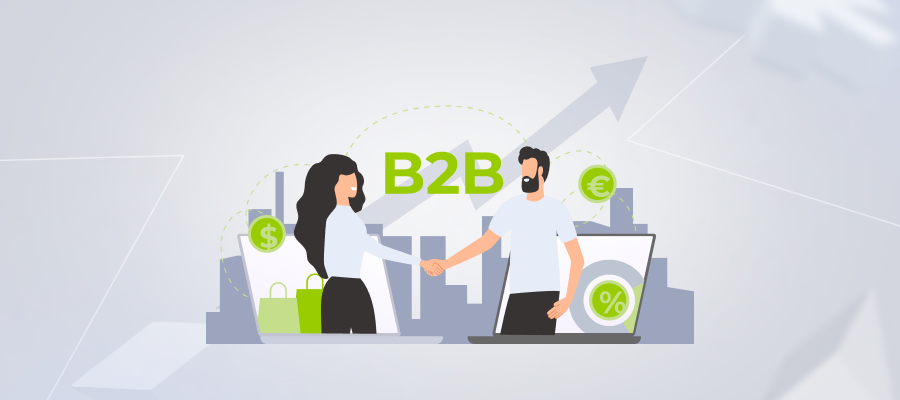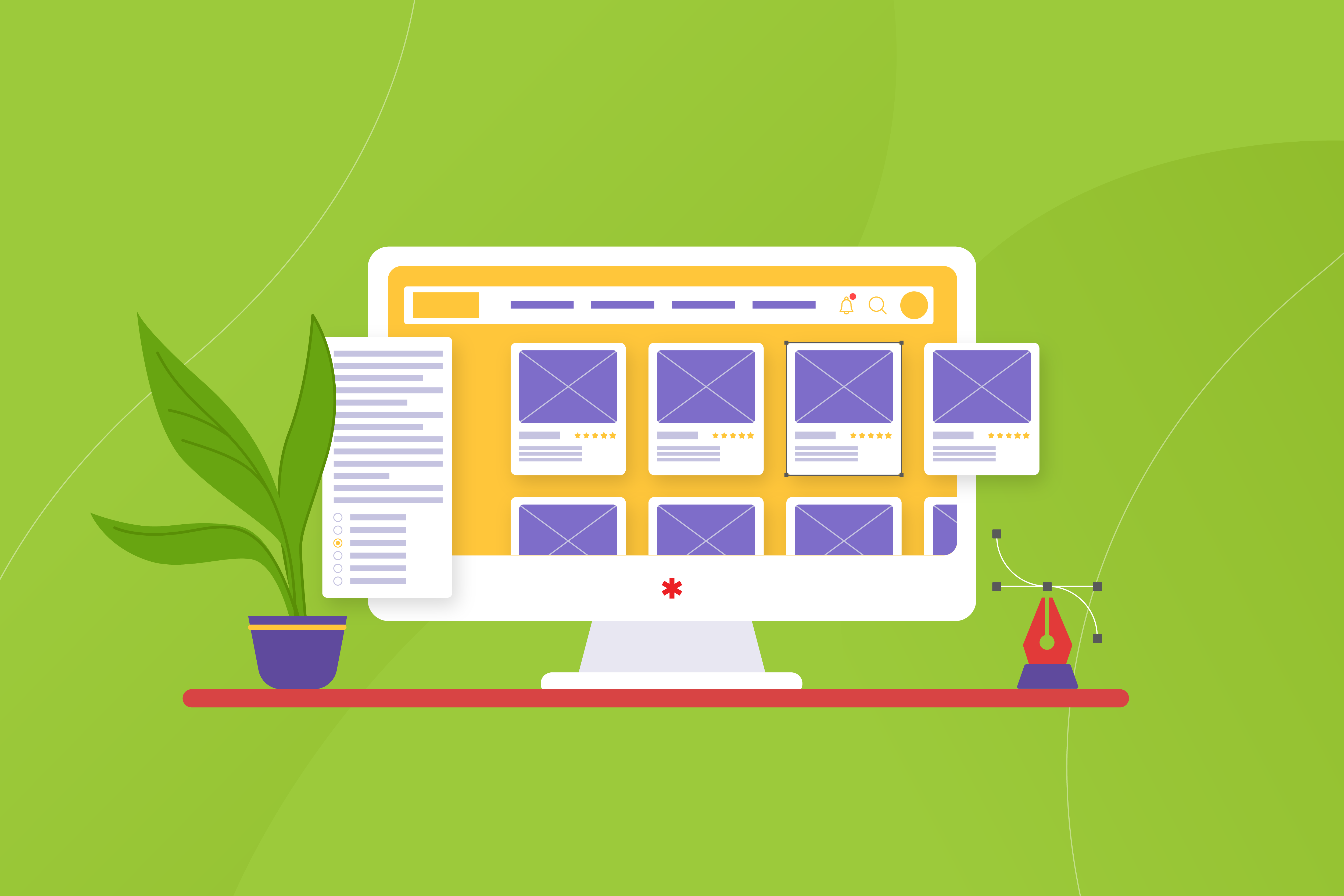Contents
- Why is customer experience important?
- Failing to leverage customers’ uniqueness without affecting customers’ privacy
- Accessibility issues and user-unfriendly UX/UI
- Omitting the importance of the load speed
- Neglecting omnichannel communication
- Disregard for delivery and payment experience
- Forewarned is forearmed: mitigate the risks of losing your customers
Statistics demonstrate that customers’ favorable reviews of an organization’s service can have a positive effect on the business, as 38% of these customers are likely to recommend the company. On the other hand, 80% of customers will turn to your rivals if they are not content with your product or service. This clearly shows that customer experience in eCommerce is just as important as the product or service itself.
With three-quarters of people shopping online at least once a month, businesses need to know how to provide satisfactory online service to their customers.
What can be done to ensure that customers have a top-notch experience while shopping at your online store, and how can you stay competitive in the eCommerce world? Continue reading to find out.
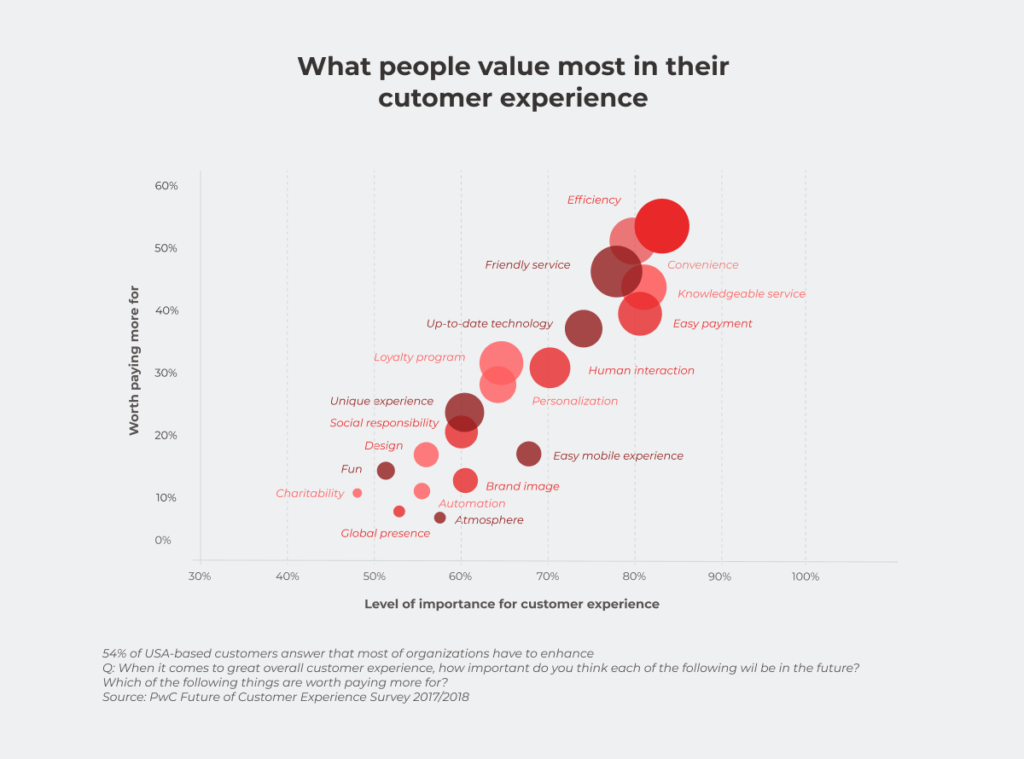
Why is customer experience important?
How much does it cost you to attract a customer? The Customer Acquisition Cost (CAC) among eCommerce platforms ranges from $127 to $462, depending on your industry. From that standpoint, it’s also crucial, alongside attracting buyers, to keep them from leaving your shop after making one $5 purchase.
So what can you do to retain customers and increase their lifetime value? McKinsey describes a long-term strategy for collecting customer data. They suggest identifying profitable and high-value consumers and running targeted investments to create a superior level of customer experience. This is one of the factors that drives consumers to use your platform and turns them into loyal customers, providing you as a business owner with a steady cash flow and loyal client base.
However, not everything always goes to plan. We’ve listed some fatal mistakes that may never let this happen. Repeat them at your own risk!
Failing to leverage customers’ uniqueness without affecting customers’ privacy
Everybody appreciates when their concerns are understood, and their issues are resolved quickly. Customizing clients’ interactions with your platform, you make it easier for them to navigate through a wide range of diverse information and, thereby, increase the likelihood of purchase. Customers usually find it convenient, when based on particular characteristics of an item they are looking for, the system recommends similar options and provides a list of goods being bought with that item.
Personalization of the customer experience in eCommerce comes first in the race of competencies essential for your business success, leaving the Internet of Things and Big Data analytics behind in the dust.
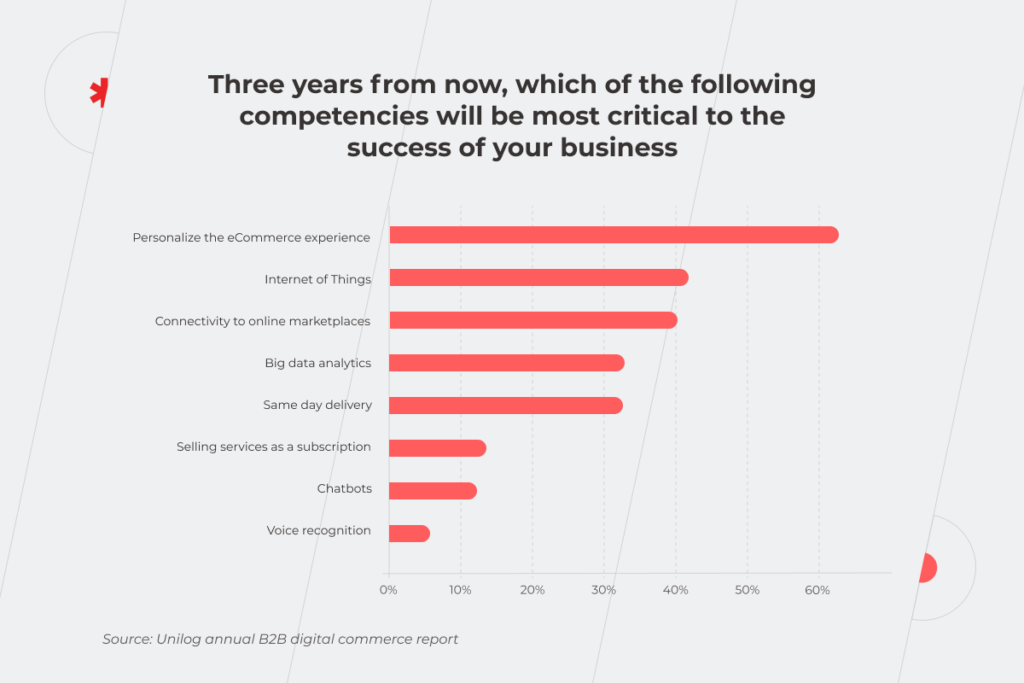
To implement true personalization and improve the online shopping experience of your consumers, you need to explore their customer journey. Find out what is essential for each shopper, and what influences their decision to buy.
However, before collecting data on buyers it’s crucial to find a balance between customer experience and customer privacy. PwC study shows that 43% of US-based consumers aren’t willing to give organizations permission to collect information about their age, location, purchase history, lifestyle, preferences, etc. To convince users to share their data, you first need to explain how this data will help enhance the service they get from you and prove that nothing threatens its privacy.
Three things matter to customers most: what data is gathered, how it’s done, and why a seller needs it. Buyers may simply not understand the purposes for which companies need their personal information. According to the BCG survey, more than half of consumers think vendors are selling their data. Therefore, the lack of clear answers to these three questions may be the reason for users’ reluctance to share their information. But, just promising not to sell the data to third-party organizations won’t motivate customers to disclose their info. Offer them data control and appropriate “value exchange” to get more information. Give them a one-time coupon or a permanent personal discount, a free sample of a product saved to favorites, access to the community, etc. to bring additional value to sharing personal data.
Consumers’ data security doesn’t depend only on whether or not you sell it to third parties. You must also protect this information from cybercriminals. How to provide this valuable service considering that 31% of eCommerce platforms visitors are intruders trying to steal the personal data of real people? Here are some best practices that eCommerce platforms should follow to ensure customers’ data security:
- Performing regular SQL checks to prevent SQL injections when hackers can access databases and retrieve consumers’ information from them.
- Encrypting personal data to make it impossible for cybercriminals to reconnect the information about buyers with real people.
- Implementing additional authentication factors to minimize the possibility of a data breach. Multi-factor authentication and two-step verification ensure that only authorized users are logged into the system.
This is great if you managed to get customers’ consent to collect and process their data, and do it securely. But that’s not the last item on the list — you may face the problem of fragmentation of collected data.
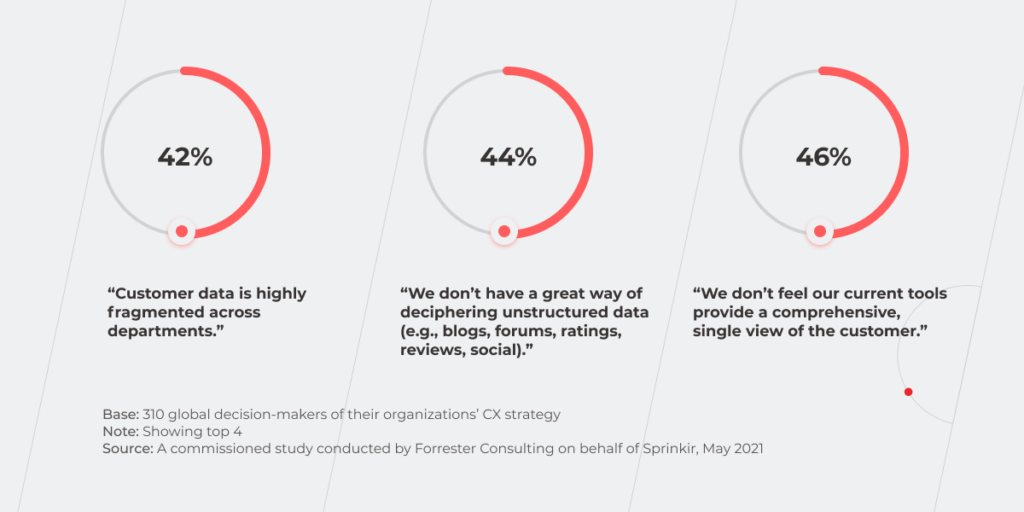
Implementation of robust Business Intelligence (BI) technologies and tools can resolve the problem of scattered customer data. Still, only 46% of organizations make use of BI to handle this issue. If you are also among the 36% of companies that are just planning BI adoption, prioritize this task to start making most of your data.
Accessibility issues and user-unfriendly UX/UI
To improve the online shopping experience, above all, create an inclusive design of your solution. Make your site accessible to everybody, including users with special needs. According to the National Center of Birth Defects and Developmental Disabilities, 26% of adult Americans have some form of disability. That’s 64 million potential shoppers with an estimated spending power of $490 billion. From a business perspective, it’s a huge consumer market and prospective customer base. And if you don’t adjust the site to their needs, 69% of them will simply leave your store.
Digital inclusion not only encourages new customers to interact with your brand and purchase your products and services. It also prevents your company from facing web accessibility lawsuits — according to UsableNet research, 74% of lawsuits involve eCommerce sites.
Here are some website requirements, stated by WCAG 2.1 AA digital accessibility standard:
- The opportunity to resize any text up to 200% without assistive technology.
- The possibility to change written text into alternative formats such as speech, simpler language, braille, or symbols. As for the text supposed to be entered by customers, you need alternative options too. For instance, speech recognition allows clients to perform such basic functions as clicking links and buttons, filling data in a field. Advanced speech recognition tools even can help with copying and pasting text, scrolling the screen, etc.
- All functions should be available from a keyboard without using a mouse.
A well-thought-out human-focused design is not limited to accessibility solely. There are other actions you can take to improve customer experience on the website. Don’t miss the opportunity to boost your profits with basic steps such as placing common elements in expected areas. Choosing a unique design for a custom eCommerce solution is okay, but don’t get carried away with over-the-top customization. For instance, users may get lost if you don’t put the shopping cart in the upper right corner.
Also, remember to provide website visitors with a search bar. According to a Forrester report, 68% of customers state that they won’t return to a site with a poorly designed search function.
The location of the search field is also important. The WallMonkeys’ example shows that simply moving it to the center of the screen can boost the conversion rate by 550%.
Omitting the importance of the load speed
If you’re wondering how to improve customer experience online, first ensure any page of your website loads in a few seconds top. The times when consumers were okay with waiting for 20-30 seconds until site loads have long sank into oblivion. Amazon reports that every 100 ms of extra load time costs them 1 percent in sales. From this standpoint, your main threat is a back button.
Also, provide customers with mobile functionality for all the stages of their communication with your business, from browsing to purchase processing and payment as more than two-thirds of Americans use their smartphones to shop on the websites.
If you’re not only working in the US market, where customers change smartphones every 2,5 years, but also in less affluent regions, where users shop from the phones that have been discontinued for five or more years, make sure that your platform adjusts well to the old-model gadgets.
Neglecting omnichannel communication
It may seem that representatives of different generations require different communication channels, but in practice, the use of these channels varies slightly as we are all living at the same time.
The truth is that nowadays online consulting is critical for your customers. The transformation of the eCommerce industry during the pandemic proved that consumers don’t necessarily need personal or face-to-face experience with a company to find and buy the products they’re looking for. Ensure flexibility of digital channels to make it easy and seamless for the customers to get detailed information about the products, discount programs, payment methods, and delivery options.
Apart from standard forms of online consulting in eCommerce such as emails, chatbots, live chats, and phone calls, you can implement cutting-edge technologies, for instance, chatbots based on the RPA and AI technology. Even basic chatbots improve the online shopping experience by dealing with simple user requests 24/7. As for the adoption of AI, intelligent virtual assistants can replace real people in many ways. You can automatically deal not only with FAQ but also enable buyers to handle a wide range of problems related to their orders without having to wait for an answer from a customer service representative.
Disregard for delivery and payment experience
Sending order/payment confirmation emails and timely updates of the shipping details are basic things, but first of all, you have to make sure that information about payment and delivery methods is easy to find. It’s optimal to create a dedicated section on the site. Use the right payment gateway that will be secure and will allow shoppers to easily pay for the items they buy.
If you sell and deliver goods over the globe there may be more complicated issues. For instance, you have to ensure that you offer enough options for payment and delivery to meet the expectations of your customers from different countries. For instance, there are some countries (e.g. China, Turkey) where buyers can’t pay with PayPal, so if you are interested in these markets, you should provide customers with alternative payment methods. Besides using different payment systems, consider the possibility to pay with cryptocurrency, as Amazon does for its gift cards. The same works for shipping too — standard services such as DPD, FedEx, etc. may be unavailable in some countries or be too costly compared to the products.
Forewarned is forearmed: mitigate the risks of losing your customers
Knowing about the most widespread mistakes related to CX and preventing them is the minimum that any company can do to keep afloat in a highly competitive area of eCommerce.
Improving customer experience in eCommerce can be also achieved by proactive integration of cutting-edge technologies. Above all, it’ll help your employees to get rid of mundane tasks and acquire new tools for in-depth analysis of customer needs. However, it’s critical to choose the right technologies, the adoption of which will support your business, rather than to try implementing all the innovations indiscriminately.
Book a call with our B2B ecommerce software development experts to determine how to bring your customer experience to a whole new level of excellence.



